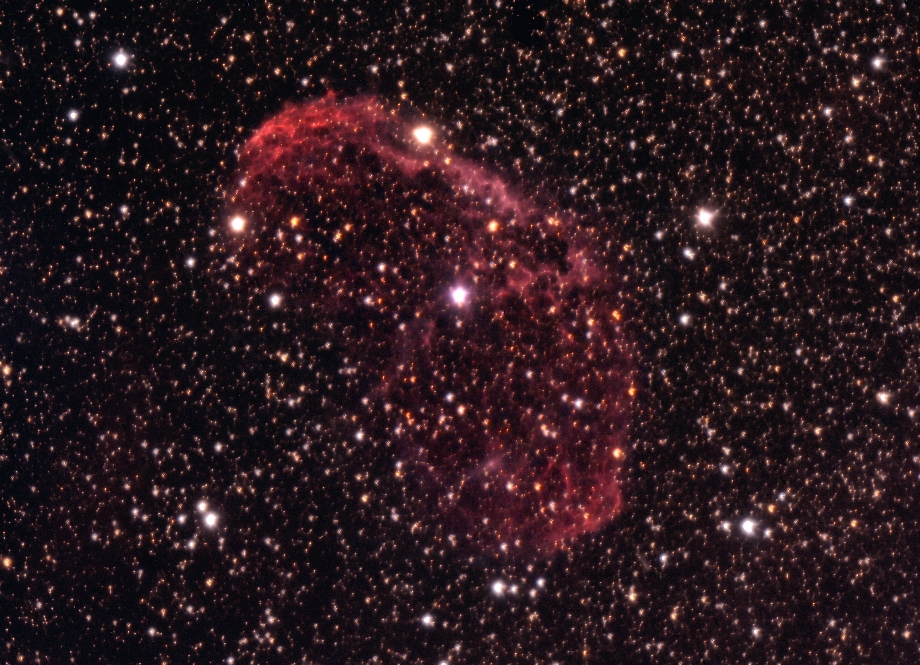 |
NGC 6888 - The Crescent Nebula in Cygnus
 |
Copyright 2006 Hap Griffin
Powerful radiation winds blowing from the massive star, HD 192163 in the center of this photograph, created this nebula. About 400,000 years ago, HD 192163 expanded enormously to become a red giant and ejected its outer layers. 200,000 years later, the intense radiation from the exposed hot, inner layer of the star began pushing gas away at speeds in excess of 3 million miles per hour. Information gathered by the Chandra X-Ray satellite leads researchers to predict that HD 192163 will explode as a supernova in approximately 100,000 years.
NGC 6888 lies at a
distance of 5000 light-years.
Date/Location:
October 14, 2006 Griffin/Hunter II Observatory Bethune, SC
Instrument: Canon 350XT Digital SLR (modified) through 10" Meade
RCX400
Focal Ratio: F/8
Guiding: Auto through Orion ED-80 w/ SBIG ST-237
Conditions: Visually clear
Weather: 40 deg. F
Exposure: 120 minutes total @ ISO 800 (24 x 5 min exposures)
Filters: Baader UV/IR Block
Processing: Focused and captured with DSLRFocus.
Calibrations, frame alignment and stacking, Adaptive Richardson_Lucy deconvolution, scaling
and JPEG conversion with ImagesPlus.
Color correction, curves and levels with Photoshop CS2. Noise reduction with
NeatImage.